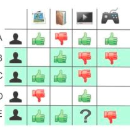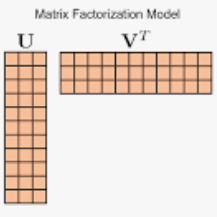Collaborative filtering is one of the most fundamental topics for recommender systems. Various methods have been proposed for collaborative filtering, ranging from matrix factorization to graph convolutional methods. Being inspired by recent successes of graph filtering-based methods and score-based generative models (SGMs), we present a novel concept of blurring-sharpening process model (BSPM). SGMs and BSPMs share the same processing philosophy that new information can be discovered (e.g., new images are generated in the case of SGMs) while original information is first perturbed and then recovered to its original form. However, SGMs and our BSPMs deal with different types of information, and their optimal perturbation and recovery processes have fundamental discrepancies. Therefore, our BSPMs have different forms from SGMs. In addition, our concept not only theoretically subsumes many existing collaborative filtering models but also outperforms them in terms of Recall and NDCG in the three benchmark datasets, Gowalla, Yelp2018, and Amazon-book. In addition, the processing time of our method is comparable to other fast baselines. Our proposed concept has much potential in the future to be enhanced by designing better blurring (i.e., perturbation) and sharpening (i.e., recovery) processes than what we use in this paper.
翻译:协同过滤是推荐系统中最基本的主题之一。已经提出了各种各样的协同过滤方法,从矩阵分解到图卷积方法。受到基于图过滤方法和基于分数的生成模型(SGM)最近的成功的启发,我们提出了一种模糊-锐化过程模型(BSPM)的新概念。 SGM和BSPMs共享相同的处理哲学,即可以发现新信息(例如在SGMs的情况下生成新图像),而最初的信息首先受到干扰,然后恢复到其原始形式。但是,SGMs和我们的BSPMs处理不同类型的信息,并且它们的最佳干扰和恢复过程有基本的差异。因此,我们的BSPMs与SGMs具有不同的形式。此外,我们的概念不仅在理论上包含了许多现有的协同过滤模型,而且在三个基准数据集Gowalla,Yelp2018和Amazon-book的召回和NDCG方面也优于它们。此外,我们方法的处理时间与其他快速基线类似。我们提出的概念在未来还有很大的潜力,可以通过设计比我们在本文中使用的更好的模糊(即干扰)和锐化(即恢复)过程来增强。



